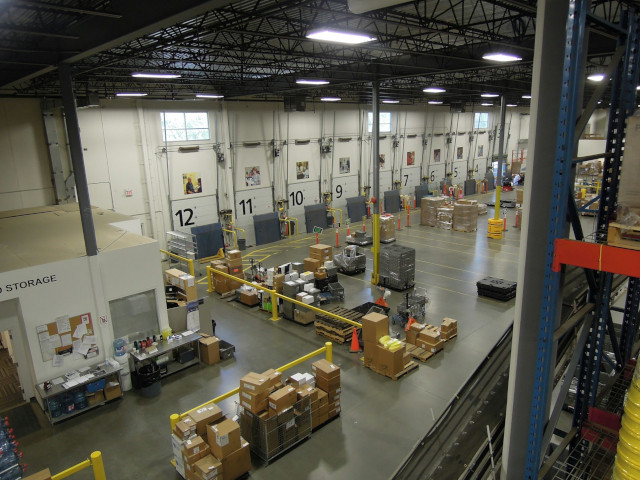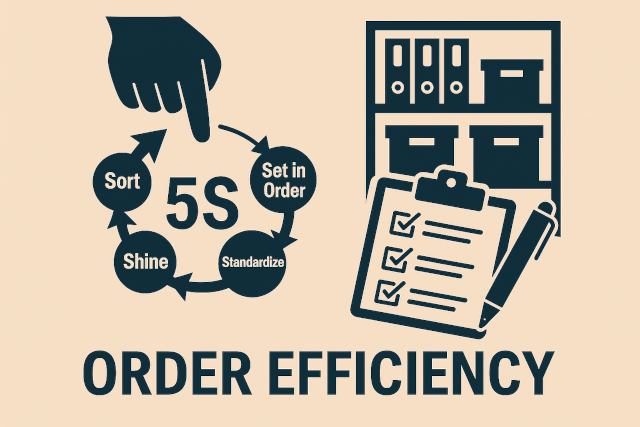Lean methods are powerful—but in warehouses, they often don’t deliver the promised results.
Initiatives stall. Whiteboards go blank. Teams lose interest.
So why does Lean fail in warehouses, and how can you make it work instead?
In this article, we break down the real reasons Lean doesn’t stick in distribution environments—and show you how to fix each one with grounded, real-world solutions.
Lean Doesn’t Reach the Warehouse Floor
Many Lean implementations start strong—with executive alignment, consultant workshops, and slide decks full of promise.
But once the kickoff ends, nothing changes in the daily operations. Pallet flow stays the same. Dock scheduling chaos returns. Pickers don’t see the point.
Why Lean fails in this scenario:
It never moves past theory. If warehouse teams don’t experience Lean in their everyday work, they’ll tune it out.
How to fix it:
Bring Lean principles to life through real operational pain points:
- Streamline dock-to-pick transitions
- Use visual controls to improve shift communication
- Reduce unnecessary handling in staging and replenishment
Incorrect Use of Lean Tools Like 5S and Kanban
Warehouse leaders often roll out Lean tools too early, too fast, or in the wrong order. Shadow boards appear. A 5S audit checklist gets distributed. But without context, these tools confuse more than they clarify.
Why Lean fails in this scenario:
The tools are right—but the application lacks timing and purpose. Teams don’t understand why it’s happening or what problem it’s solving.
How to fix it:
Use Lean tools to address visible, frustrating problems:
- Apply 5S to a congested pick zone—not the whole DC
- Use kanban cards to trigger restock in fast-moving areas
- Visually organize staging zones to cut dispatch delays
Warehouse Flow Is Too Dynamic for Rigid Lean Projects
Unlike manufacturing, warehouses experience constant change—volume spikes, carrier delays, staff shortages.
Rigid Lean project plans that work in factories often collapse in this shifting environment.
Why Lean fails in this scenario:
Value stream maps and future state diagrams lose relevance within days. Teams disengage when Lean feels outdated or disconnected.
How to fix it:
Lean in warehouses must be something done over and over again, and flexible:
- Use visual flowboards to highlight inbound/outbound movement
- Trial micro-improvements (e.g. a single staging lane redesign)
- Run quick PDCA cycles focused on one dock door or shift pattern
Lack of Employee Trust and Engagement
Lean requires trust to work. But in warehouse settings—where speed and labor cost dominate—Lean is often seen as a smokescreen for job cuts or added pressure.
Why Lean fails in this scenario:
Operators see it as top-down enforcement. They protect themselves rather than improve processes.
How to fix it:
Make Lean about them:
- Ask what slows them down
- Let them co-design new staging layouts or visual signals
- Celebrate improvements even if they’re small
Bonus tip: Start improvement boards where operators post ideas—not managers.
No Time Set Aside for Continuous Improvement
Most warehouse teams are running lean in the wrong way: minimal staff, high targets, no breathing room. There’s no time to think—let alone improve.
Why Lean fails in this scenario:
Without protected time for reflection and change, firefighting always wins.
How to fix it:
Treat improvement like scheduled work:
- Reserve 30–60 minutes per team each week
- Tackle one recurring issue at a time
- Track improvements on a public board with outcomes
You’ll get better ideas, stronger morale, and measurable ROI.
Final Thoughts: Why Lean Fails—and How to Make It Stick in Warehousing
Lean doesn’t fail because it doesn’t work.
It fails when it’s applied without context, collaboration, or respect for the realities of warehousing.
To succeed:
- Focus on floor-level wins
- Use tools with purpose, not for show
- Adapt to daily flow, not quarterly plans
- Trust your team to drive the change
When Lean becomes visible, useful, and owned by the team—it doesn’t feel like a project anymore. It becomes how the warehouse runs.



